第63章
The so-called mesentery is also a membrane; and extends continuously from the long stretch of intestine to the great vessel and the aorta. In it are numerous and close-packed vessels, which run from the intestines to the great vessel and to the aorta. The formation of this membrane we shall find to be the result of necessity, as is that of the other [similar] parts. What, however, is the final cause of its existence in sanguineous animals is manifest on reflection. For it is necessary that animals shall get nutriment from without; and, again, that this shall be converted into the ultimate nutriment, which is then distributed as sustenance to the various parts; this ultimate nutriment being, in sanguineous animals, what we call blood, and having, in bloodless animals, no definite name. This being so, there must be channels through which the nutriment shall pass, as it were through roots, from the stomach into the blood-vessels. Now the roots of plants are in the ground; for thence their nutriment is derived. But in animals the stomach and intestines represent the ground from which the nutriment is to be taken. The mesentery, then, is an organ to contain the roots; and these roots are the vessels that traverse it. This then is the final cause of its existence. But how it absorbs nutriment, and how that portion of the food which enters into the vessels is distributed by them to the various parts of the body, are questions which will be considered when we come to deal with the generation and nutrition of animals.
The constitution of sanguineous animals, so far as the parts as yet mentioned are concerned, and the reasons for such constitution, have now been set forth. In natural sequence we should next go on to the organs of generation, as yet undescribed, on which depend the distinctions of male and female. But, inasmuch as we shall have to deal specially with generation hereafter, it will be more convenient to defer the consideration of these parts to that occasion.